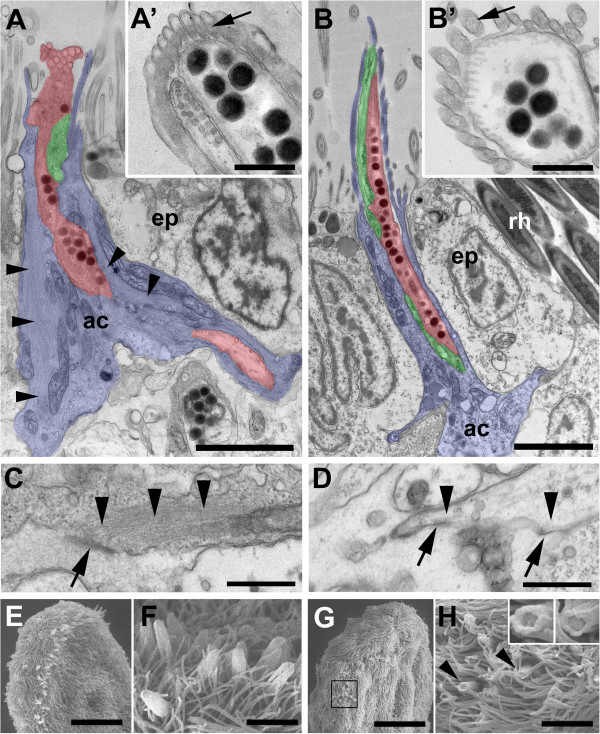Figure 7.
Morphological comparison of controls and macif1 dsRNA treated animals at 9 days post amputation. (A-D) TEM of a chemically fixed adhesive organ of a control (A, C) and a macif1 RNAi treated animal (B, D). Note that all three cell types are present in both treatment groups: anchor cell (blue), adhesive (red) and releasing gland (green). Arrowheads indicate intermediate filaments. Note the absence of intermediate filaments in the macif1 RNAi treated specimen (B). Insets (A’, B’) show a cross section of the adhesive organ outside of the epidermal layer. Note the different amount of actin filaments within the microvilli and the lack of the dense core in macif1 RNAi treated animals (arrows). (C, D) Arrows indicate hemidesmosomes of a control (C) and a macif1 RNAi treated animal (D). Note the dense IF bundles connected to the hemidesmosomes in controls, are missing in macif1 RNAi treated animals (arrowheads). (E-H) Scanning electron microscopy of adhesive organs at the tail plate and details. Note that the adhesive organs of control animals reach out above the cilia (E, F) while adhesive organs of macif1 dsRNA treated animals are much shorter (G, H) and the microvilli core is open. Scale bars (A, B, F, H) 2 μm, (A’, B’, C, D) 0.5 μm, (E, G) 20 μm.

